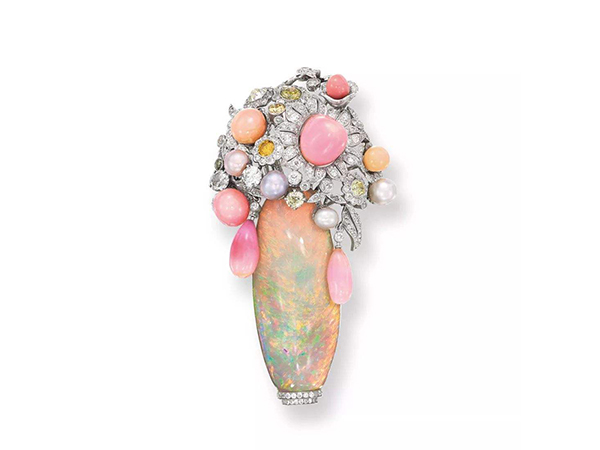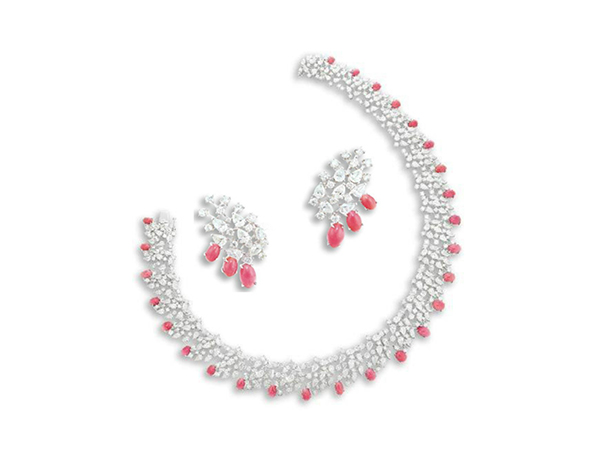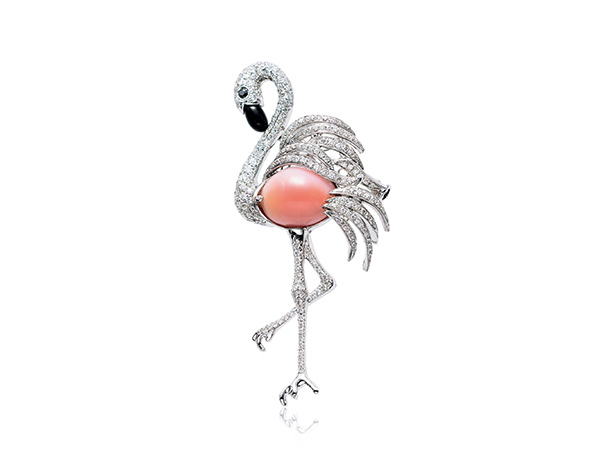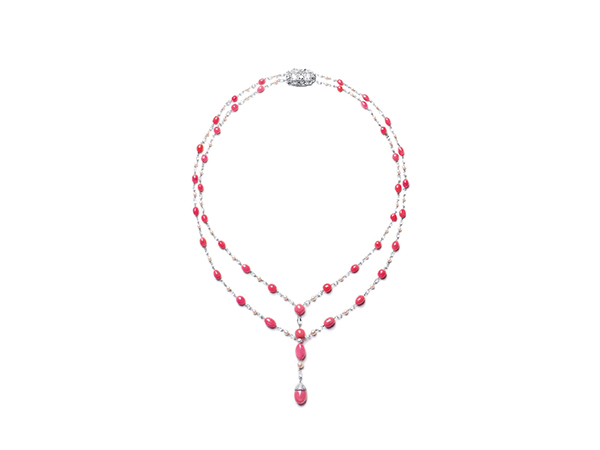CONCH PEARLS

The pearl-producing conch is found on beaches in Florida, Mexico, the Bahamas and the arnti peninsula in the Caribbean.They owe their existence entirely to nature, not to artificial breeding.
Rare reason
That is why Conch Pearls are rare and expensive natural Pearls.Any attempt to artificially breed conch pearls has, so far at least, failed.Only in about 50,000 conch shells can one obtain a usable pearl after removing the meat.So a maximum of 2,000 to 3,000 conch pearls are found each year.Only 20% to 30% of these conch pearls can be used for jewelry processing, which is the main reason why this kind of natural pearl is very rare in the whole range.
The characteristics of
The most typical Conch Pearls have a large band width in color, which varies from pale rose to bright pink and sometimes even gray-green to ochre-brown.But now white conch pearls have also been found.In rose, the main shape is the symmetrical oval, of course, some of the shape is strange and strange, in their weight, conch pearl is also different.
The typical Conch Pearls weigh about 2 to 6 carats, and the larger Conch Pearls weigh up to 20 carats.
In the face of nature's extraordinary workmanship, great human beings have their moments of powerlessness.Attempts to artificially grow conch pearls in the same way as oyster pearls have, unfortunately, failed to do so so far.Nature endows conch shell with its unique form and structure.
The spiral shape of golden section ratio is too complicated to implement artificial kernel planting.Moreover, this conch is as sensitive as a sentimental girl. It is almost impossible to obtain pearls without harming the conch's life!
Of course, if the natural conch pearl production is huge, cannot be cultured is not the reason why conch pearl precious.Unfortunately, only one usable conch pearl is available from about 50,000 conch shells, and only 20 to 30 percent of the 2,000 to 3,000 conch pearls found each year are used for jewelry processing.In other words, only 600 or so conch pearls are made into glittering jewelry worldwide each year.

Colors have a larger band width
The most typical conch pearl has a wide band of color, ranging from light rose to bright pink and sometimes even from gray-green to ochre brown.White conch pearls have also been found.
In rose, the main shape is the symmetrical oval, of course, some of the shape is strange and strange, in their weight, conch pearl is also different.The average conch pearl weighs about 2 to 6 carats, with larger conch pearls weighing up to 20 carats.
Is conch bead really "new expensive"?
Although in recent years conch bead is flourishing at auction, let a lot of friends mistake conch bead is a kind of precious gem that appears suddenly.But in fact, as early as the 19th century in the Victorian period, there have been many exquisite conch beads.Throughout the different design styles, from the Victorian period, ART nouveau period to the ART DECO period, conch beads are never absent.

Brad Pitt, known as the most handsome Oscar winner, bought Damiani's most distinctive conch pearl jewelry.
During his last decade as general manager of Mikimoto, Japan's king of pearls, from 1957 to 1997, Mr. Yamaguchi made a special collection of conch pearls every year, making Japan the first market in the world to recognize the value of conch pearls.He firmly believes that there must be a brand to bear the responsibility of conch pearl development.
Distinguish between true and false
Probably a lot of friends are in when choose and buy gem, the most worry how to distinguish true false.As far as conch beads are concerned, each real conch bead has characteristic surface growth lines (such as flame lines), some of which are obvious, while others need to be magnified.
Additional, now the market is common false conch bead, be conch shell burnish normally and become, although can be very close with conch bead on color, but conch shell is formed naturally the structural grain of a circle of a circle is difficult to remove, it is to distinguish true false conch bead the most apparent characteristic.
Large conch bead surface flame pattern
Conch shell grinding beads, visible ring shell growth structure
The story of conch beads
Seven lobsters for one conch bead
You must be very hard to imagine, nowadays at every price, with tens of thousands of dollars per carat count of conch pearl can be replaced with 7 lobsters easily!Yes, you read that right, Manuel Marcial, the famous conch pearl expert, did it!But that was 54 years ago, in 1959.

As if it were a call of fate, Manuel Marcial was so impressed by its sudden bloom of youth that he insisted on exchanging seven lobsters for this magnificent pearl.Perhaps he did not know at that moment that it was this singular treasure that would open his glittering jewelry career for decades to come.
Manuel Marcial is one of the few experts on conch pearls who has seen countless attempts to grow them artificially.But unfortunately, no conch pearl has ever been artificially cultivated.It is as rare as the freewill gifts of god, producing less than 900 a year, as fine as porcelain but rarer than diamonds.
